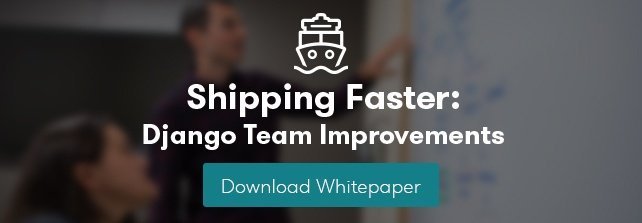
Did you know Django 2.0 is out? The development team at Caktus knows and we’re excited! You should be excited too if you work with or depend on Django. Here’s what our Cakti have been saying about the recently-released 2.0 beta.
What are Cakti Excited About?
Django first supported Python 3 with the release of version 1.5 back in February 2014. Adoption of Python 3 has only grown since then and we’re ready for the milestone that 2.0 marks: dropping support for Python 2. Legacy projects that aren’t ready to make the jump can still enjoy the long-term support of Django 1.11 on Python 2, of course.
With the removal of Python 2 support, a lot of Django’s internals have been simplified and cleaned up, no longer needing to support both major variants of Python. We’ve put a lot of work into moving our own projects forward to Python 3 and it’s great to see the wider Django community moving forward, too.
In more concrete changes, some Caktus devs are enthused by transitions Django is making away from positional arguments, which can be error-prone. Among the changes are the removal of optional positional arguments from form fields, removal of positional arguments form indexes entirely, and the addition of keyword-only arguments to custom template tags.
Of course, the new responsive and mobile-friendly admin is a much-anticipated feature! Django’s admin interface has always been a great out-of-the-box way to give staff and client users quick access to the data behind the sites we build with it. It can be a quick way to provide simple behind-the-scenes interfaces to control a wide variety of site content. Now it extends that accessibility to use on the go.
What are Cakti Cautious About?
While we’re excited about a Python 3-only Django, the first thing on our list of cautions about the new release is also dropping support for Python 2. We’ve been upgrading a backlog of our own Django apps to support Python 3 in preparation, but our projects depend on a wide range of third-party apps among which we know we’ll find holdouts. That’s going to mean finding alternatives, pushing pull requests, and even forking some things to get them forward for any project we want to move to Django 2.0.
Is There Anything Cakti Actually Dislike?
While there’s a lot to be excited about, every big change has its costs and its risks. There are certainly upsets in the Django landscape we wish had gone differently, even if we would never consider them reasons to avoid the new release.
Requiring ForeignKey’s on_delete parameter
Some of us dislike the new requirement that the on_delete option to ForeignKey fields be explicit. By default, Django has always used the CASCADE rule to handle what happens when an object is deleted and other objects have references to it, causing the whole chain of objects to be deleted together to avoid broken state. There have also been other on_delete options for other behaviors like prohibiting such deletions or setting the references to None when the target is deleted. As of Django 2.0, the on_delete no longer defaults to CASCADE and you must pick an option explicitly.
While there are some benefits to the change, one of the most unfortunate results is that updating to Django 2.0 means updating all of your models with an explicit on_delete choice…including the entire history of your migrations, even the ones that have already been run, which will no longer be compatible without the update.
Adding a Second URL Format
A new URL format is now available. It offers a much more readable and understandable format than the old regular-expression based URL patterns Django has used for years. This largely a welcome change that will make Django more accessible to newcomers and projects easier to maintain.
However, the new format is introduced in addition to the old-style regular-expression version of patterns. You can use the new style in new or existing projects, and you can make the choice to replace all your existing patterns with the cleaner style, but you’ll have to continue to contend with third-party apps that won’t make the change. If you have a sufficiently large enough project, there’s a good chance you’ll forgo migrating all your URL patterns.
Maybe this will improve with time, but for now, we’ll have to deal with the cognitive cost of both formats in our projects.
In Conclusion
Caktus is definitely ready to continue moving our client and internal projects forward with major Django releases. We have been diligently migrating projects between LTS releases. Django 2.0 will be an important stepping stone to the next LTS after 1.11, but we won’t wait until then to start learning and experimenting with these changes for projects both big and small.
Django has come a long way and Caktus is proud to continue to be a part of that.


